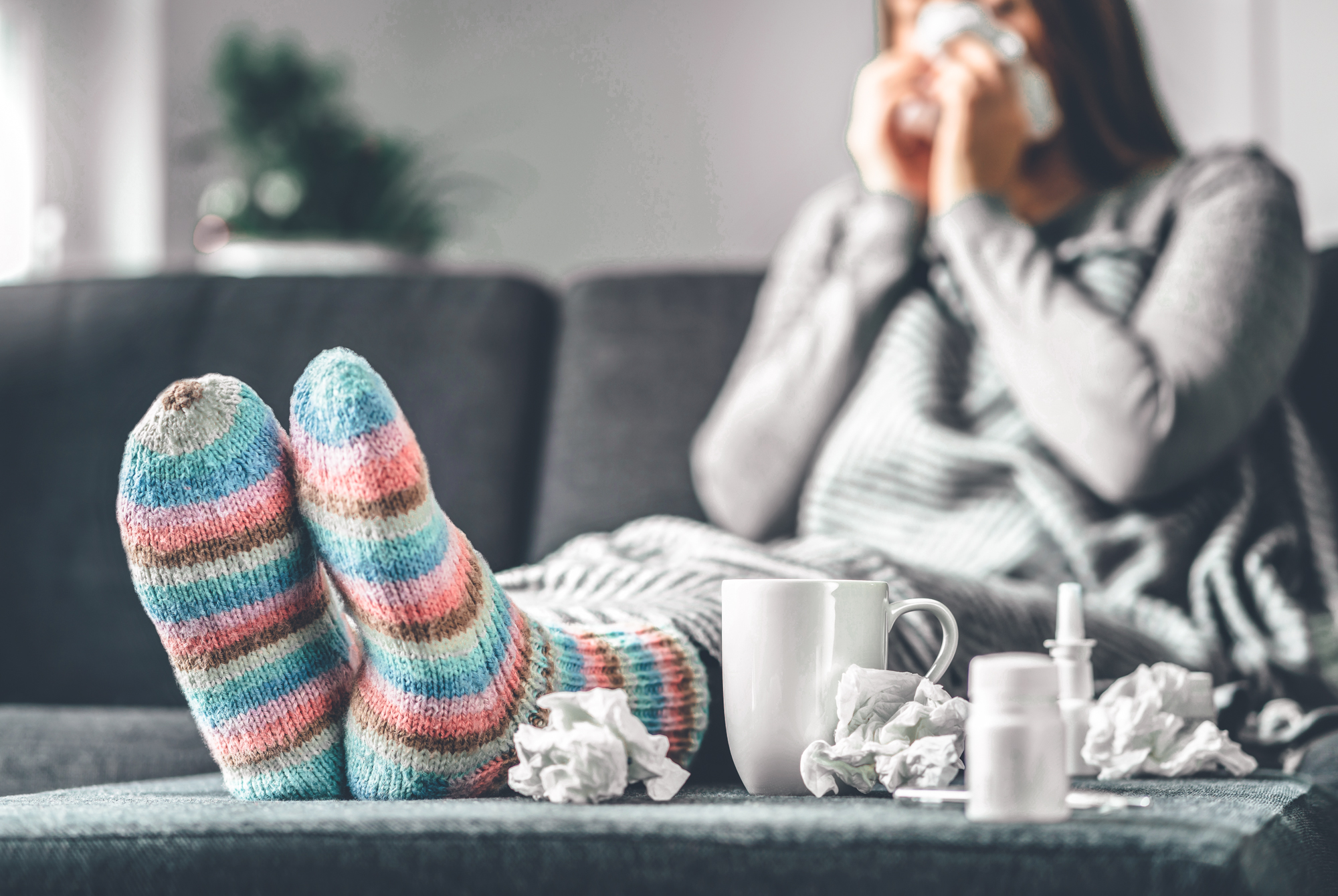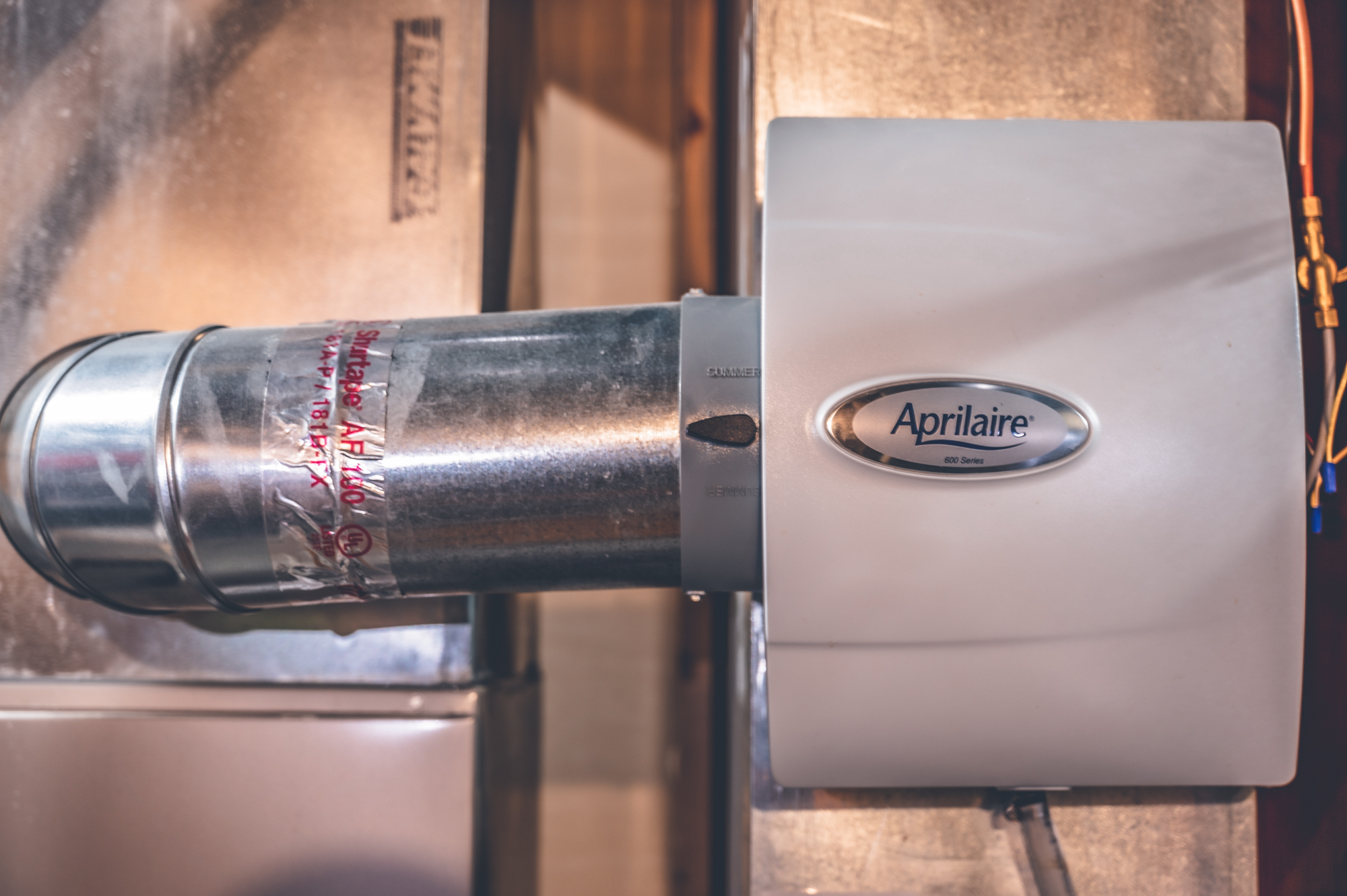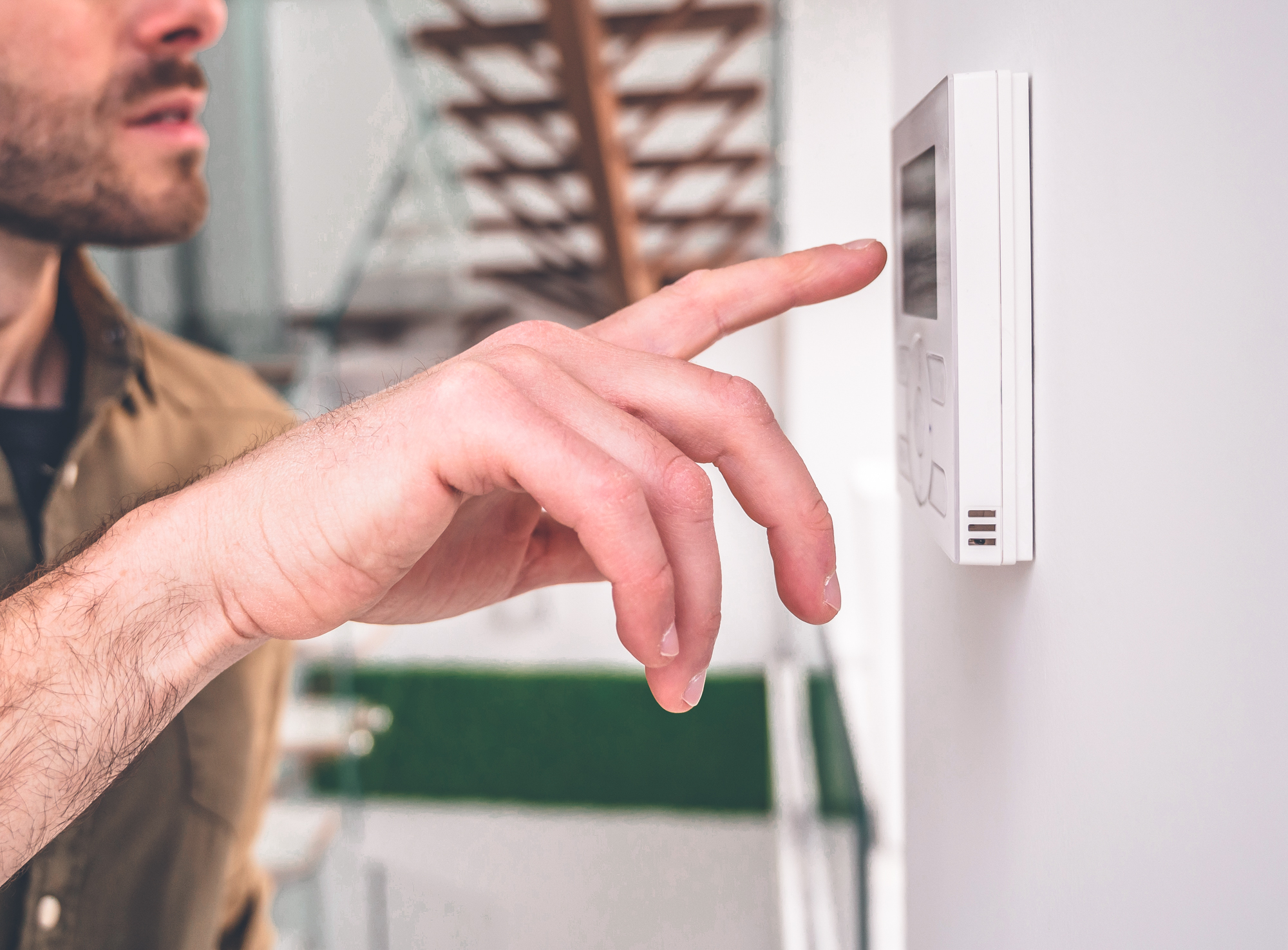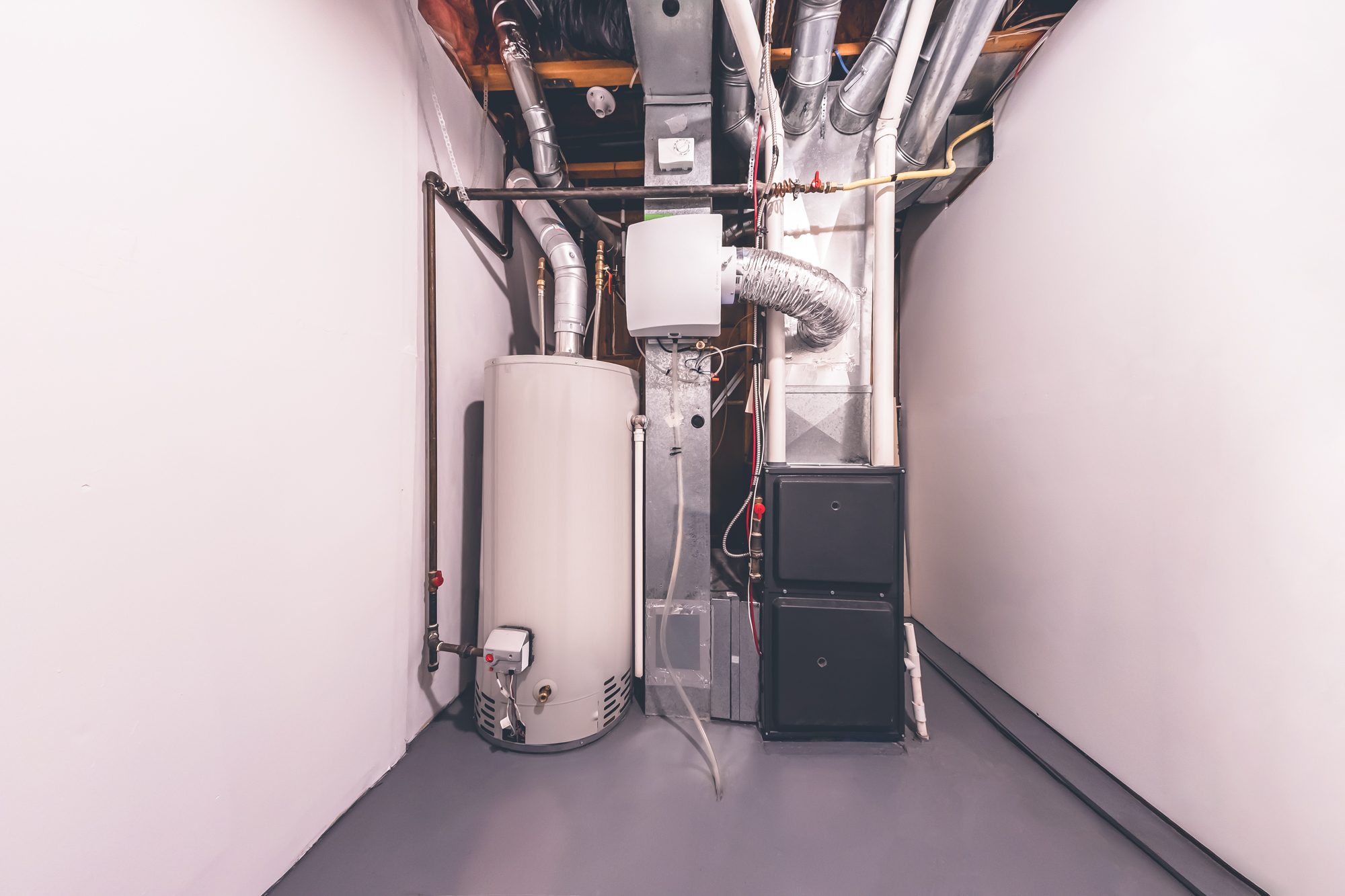There’s a lot to look forward to when winter comes around. Many Michiganders look forward to warm blankets, hot cocoa, and snowy nights. But while there’s plenty to love about the colder months, they also bring about many potential inconveniences. As the temperature starts to drop, so does the humidity in the air. This dry air can wreak havoc on both your body and your home.
Whole-home humidifiers can be a great way to combat the potential health and home issues that arise when it comes to dry weather.
- What are Whole-Home Humidifiers?
- What are the Benefits of Installing a Whole-Home Humidifier in Your House?
- Different Types of Whole-Home Humidifiers and How They Work
- FAQs When Using a Whole-Home Humidifier
- Is a Whole-Home Humidifier What My House Needs?
- Humidifier Installation Services at Blakeslee & Son
What are Whole-Home Humidifiers?
When there is not enough moisture in the air, humidifiers work to add humidity, helping your home reach the correct humidity level. Whole-home humidifiers treat the entire home, using your ducts to distribute treated air back to your living areas, working with your heating system to keep your home comfortable.

What are the Benefits of Installing a Whole-Home Humidifier in Your House?
Health Benefits
Whole-house humidifiers have been shown to help with:
- lung health
- dry sinuses
- allergy symptoms
- asthma symptoms
- snoring
- bloody noses
- reducing the chances of catching colds, the flu, respiratory illnesses, and infections
Healthier Skin and Hair
The lack of humidity can make your skin, lips, and hair become dry and fragile in the winter. Using a humidifier to add moisture to the indoor air may help to reduce the occurrence of dry, itchy, or flaky skin along with dry, frizzy, or brittle hair.
Home Benefits
When humidity levels in the home are kept balanced, the damaging effects of dry air are kept at bay. Wood flooring, cabinets, furniture, wallpaper, and other fixtures are protected from cracks and drying out. Added humidity might also help your moisture-loving houseplants become more vibrant and reduce the static electricity in your home.
Energy Efficiency
Proper humidification of your home can make the space feel warmer with lower temperatures. Installing a whole-house humidifier can save you energy and money by setting your thermostat a little lower to cut back on your electric bill.
Different Types of Whole-Home Humidifiers and How They Work
When looking to purchase a whole-house humidifier, keep in mind that there three main types: Bypass, Fan-Powered, and Steam.
Bypass Humidifiers
Bypass Humidifiers add moisture to the warm air from the furnace. These whole-house humidifiers draw warm air from your home’s heat ducts and pass it through a water panel. This allows the air to collect moisture which is then delivered back into your house.
A bypass humidifier can be installed on the supply or return plenum of your central air system. However, this type of humidifier typically needs to drain its water supply. So if you don’t have a floor drain, you can always get a drainless bypass humidifier installed. These reuse their water supply, meaning they will end up using less water.
The most affordable type of whole house humidifiers are bypass humidifiers. These humidifiers are efficient and install easily but require more maintenance than other whole-home humidifiers. They cost anywhere from $75-$300.
Fan-Powered Humidifiers
Fan-powered humidifiers work similarly to bypass humidifiers, but they include a fan that blows air across the water panel for increased water evaporation. They are also able to produce more humidity per day (up to a gallon more!) compared to bypass humidifiers. They’re also more energy-efficient, as the internal fan uses the same amount of electricity as a 25-watt light bulb.
Because powered flow-through systems don’t require a bypass duct, they can be installed in smaller spaces. Fan-powered whole-house humidifiers are perfect for homes built on slabs or with HVAC systems in a closet.Fan-powered humidifier models require less maintenance than a bypass humidifier and can cost anywhere from $200-$500.

Steam Humidifiers
Steam humidifiers work by electrically boiling water to create steam. The steam is then picked up and pushed throughout your ventilation system. Steam humidifiers are the fastest and most efficient way to increase and maintain good levels of humidity in your home.
Steam whole-house humidifiers provide the purest and most natural form of humidity that you can have in your home. They will also run moisture as needed, regardless of the condition of your heating/cooling system.
Steam humidifiers are typically the most energy-efficient whole-house humidifying option. Although they’re generally more expensive ($300-$1,000) than other humidifiers, they can save you money in the long run on energy costs.
FAQs When Using a Whole-Home Humidifier:
What Should the Humidity Level in My Home Be?
Certain home humidifiers offer sensor technology that detect humidity levels and can tell you when you need to engage your humidifier system. You can also use a gauge called a hygrometer will help you check your home’s humidity level and make adjustments accordingly.
In general, humidity levels are considered low when they’re below 30 percent. You’ll want to aim for somewhere between 40 and 50 percent humidity. The ideal humidity level is 45 percent, which offers ample moisture without contributing to mold growth or making the air feel wet.
How Long Do Whole-Home Humidifiers Last?
Depending on the frequency of maintenance and quality of your water, a whole-home humidifier will have a life expectancy of around 10-15 years.
How do I Maintain My Whole-Home Humidifier?
Because of the potential for bacteria and mold growth, it’s important that you clean and maintain your humidifier properly. Most manufacturers actually recommend that you replace your humidifier’s water panel filter at least once a year — although it’s probably wise to replace it more often than that.
However, some models offer washable water panels, allowing you to soak your filter in cold water to dissolve away the dirt and grime. Then, drain the water, rinse the filter and wipe it down, and you’re good to go.

What Do You Do With Your Whole-Home Humidifier During the Summer?
Adding humidity to your home during the dry, cold winter is a no-brainer — but what about the hot and humid summer? Although many owners turn off their whole-home humidifiers during this season, there are some good arguments for keeping it running year-round.
Running the air conditioning can make the air in your home dry, causing many of the same discomforts you may experience during the winter months, including itchy eyes, sore throat and headaches. Summer is also a major allergy season, and allergy symptoms can be compounded by dry air. Because of that, using your whole-house humidifiers during the summer is a great way to combat those summer inconveniences. Using a humidifier in the summer can also help improve the air quality in your home along with aiding in your body’s ability to clear up infections and congestion.
And last but not least, using a humidifier in the summer can actually keep you cooler. An AC unit working in conjunction with a humidifier can keep your room cooler for longer periods of time. Well-balanced humidity will make you feel cooler, allowing you to raise the temperature of your AC and use less energy.
Is a Whole-Home Humidifier What My House Needs?
Well, it depends. Just because your air is too dry in your home, it doesn’t necessarily mean you need to install a humidifier on your HVAC system immediately. Although whole-home humidifiers can do a lot of good for maintaining proper humidity levels, they also can create some potential issues. Home humidifiers can cause mold to grow if used incorrectly or if not well-maintained. If you do opt for a home humidifier, it’s crucial that you’re aware of the potential for mold growth.
Before installing a whole-house humidifier, you will probably want to first identify why your home is too dry in the first place. More than likely, you have places throughout your home that are allowing air to both enter and escape. And even if you end up installing a humidifier in your home, you need to make sure you seal air leakages properly. Not doing so will both limit the effectiveness of your humidifier and will create more opportunities for mold growth in your home.

Humidifier Installation Services at Blakeslee & Son
Blakeslee & Son provides whole-home humidifier installation services in Rockford, Ada, Cascade, Cedar Springs, Comstock Park, Walker, Grandville, MI, and the surrounding areas in West Michigan. We also provide emergency services throughout the winter to assist you during those dry months.
At Blakeslee & Son, we install Honeywell and Aprilaire humidifiers. Call us or reach out to us on our website for assistance with your furnace and humidifier this winter!


